Tired of being embarrassed when you have to crank and crank to get your baby started after you fill the tank with fuel? I certainly was. My 986 had that perplexing problem ever since I bought it. It always started, but it required lots of cranking and I had to baby the throttle to get it running. Turned out I wasn't alone. Other folks reported the same behavior, and recounted their efforts to solve it. Some opted for a scattergun approach, throwing parts at it. I had in mind a more scientific approach.
Several forum members -- notably blue62, Luckyman01, and Lowski -- helpfully pointed me in the direction of the EVAP system, so I researched the bejeesus out of the system and how it functions. I owe a special debt of gratitude to JFP in PA for his expertise and helpful diagrams of the EVAP system. JFP confirmed that the problem was likely the valve under the driver's side intake manifold. Oddly, there was no consensus about the name of said valve -- folks referred to it as purge valve, purge solenoid, fuel vent valve, fuel system vapor valve, and tank vent valve -- so I gave Pelican a call and described it to Scott in the parts department. Scott was knowledgeable and helpful. The valve is listed in their parts catalog as the "regeneration valve," so unless another source calls it something else, the nomenclature mystery is solved. Pelican's price for the valve was $46.25, not too bad, so I ordered one forthwith.
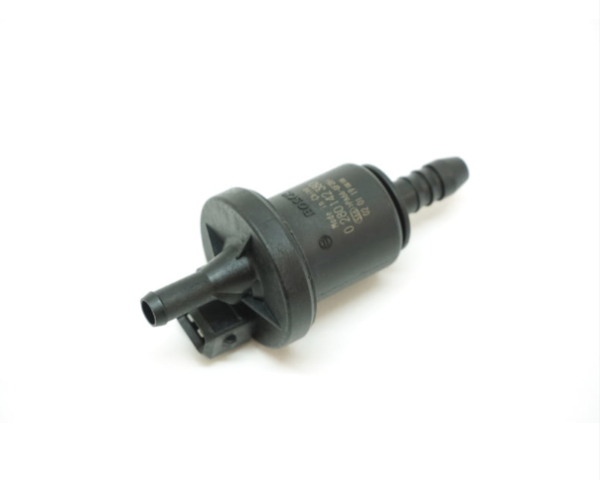
In the meantime I disconnected the old valve. That process wasn't as straightforward as I'd hoped, primarily because it's underneath that manifold, a tight space. Real tight. Guys with catchers-glove-size mitts don't stand a chance -- removing the manifold to get at the valve is about the only solution for them. I was glad I didn't have to do that. Still, it was a gawdawful thrash getting the old valve out, chiefly caused by one of the hoses. Actually, "hose" is the wrong term; "tube" is more accurate -- a black 10 mm hard plastic tube shrink-fitted to a nipple of the valve. The hose attached to the other nipple is standard 3/8" ID rubber fuel line, which connects to the throttle body. The troublesome plastic tube ultimately connects to the charcoal cannister. Removal of the tube is from underneath the car. I didn't want to remove it unless I had to.
But I had a problem -- I couldn't detach the tube from the old valve. What to do? My solution was to cut the tube close to the nipple. A Dremel with a cutting wheel made it painless. I pulled the valve out from under the manifold, but I still had a big problem -- the chances of sliding the hard plastic tube onto the new valve were approximately slim to none. No way around it, I'd have to put the car on jack stands, remove the tube, and install a new tube that was more supple. I called Scott at Pelican again, intending to order one. (See illustration below. The tube is at the bottom, left side, #19. The regeneration valve itself is #20.)
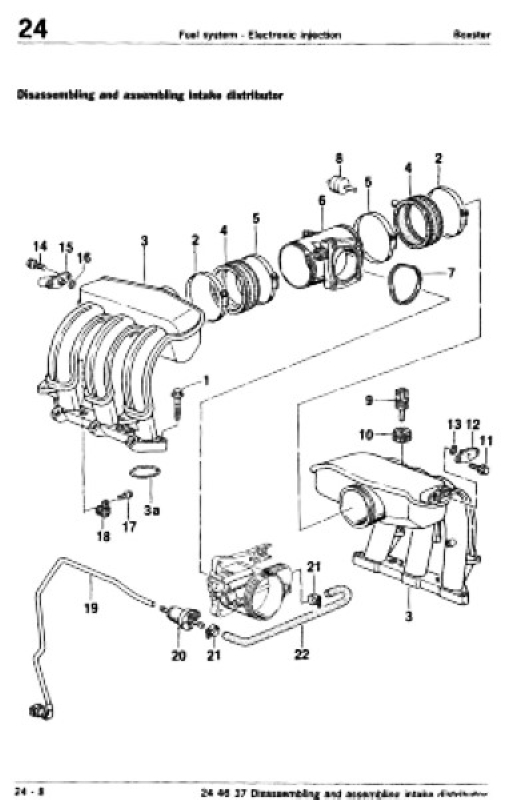
Surprise! It's available only as part of an assembly comprised of tube, valve, and hose, Scott informed me. Price: $330 for OEM, but Scott had one in stock he said he'd let me have for $280. Returning the valve I bought would bring the price down to $234 or so. I did some quick calculations. If the valve's price is $47, that would mean I'm paying around $187 for a plastic tube and a rubber hose?!?
Now... I fully understand the purist mentality, which dictates that everything be "correct," i.e. absolutely stock, down to the last nut, bolt, and hose. I have a touch of the syndrome myself. That said, I just couldn't justify coughing up $187 for fifteen bucks' worth of plastic tubing and rubber hose. My improvised solution was to connect the tube to the valve with a short length of 3/8" ID rubber fuel line and hose clamps. As the photo below shows, access to the hose clamps dictated the length of the connecting hose, otherwise it could have been shorter.
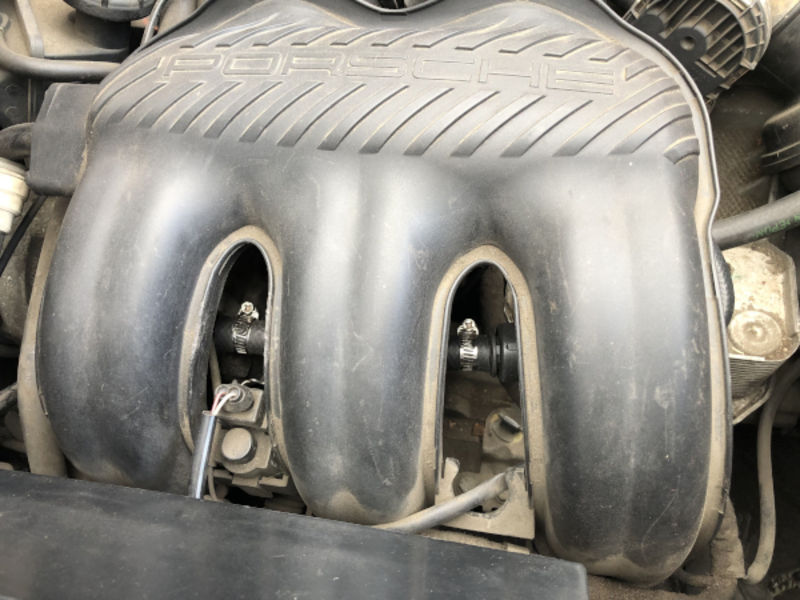
NOTE: Pay no attention to the filthiness of the engine. This state of affairs will soon be set right. I picked up the foaming engine cleaner I like, some four mil plastic, and masking tape for the task. Now, back to our story...
Here's a view of the new regeneration valve tucked under the manifold with the electrical connecter and hose connected to it:
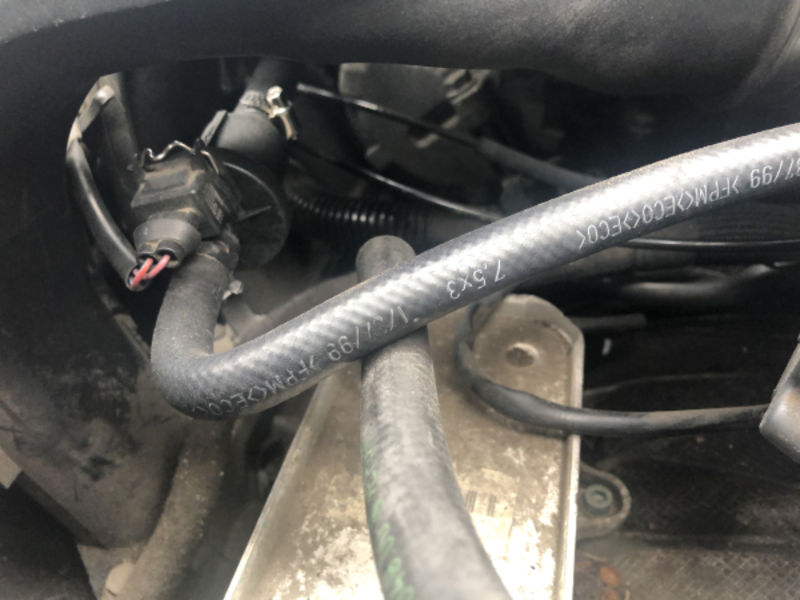
The other end of the hose, connected to the throttle body:
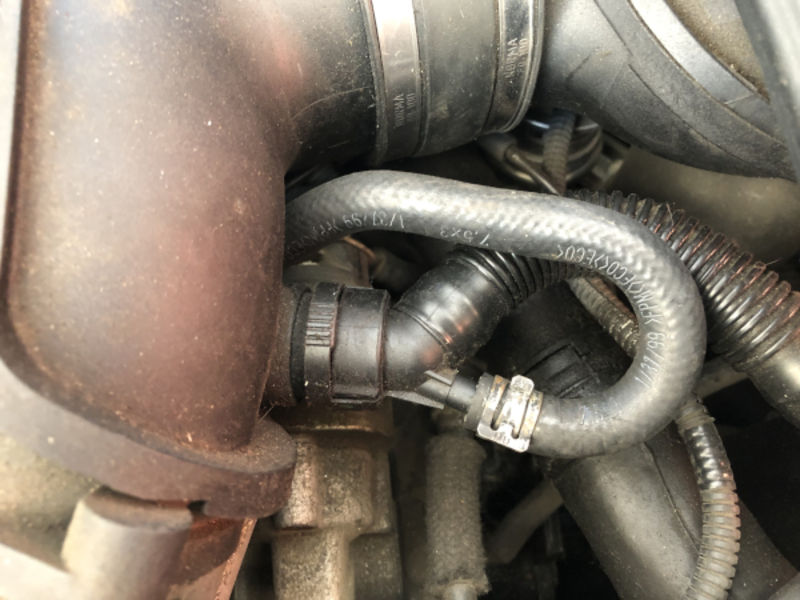
I would have included a photo of the plastic tube if it had been visible from the top. But if you've seen one 10 mm black plastic tube you've seen 'em all.
After buttoning up the engine compartment I hopped behind the wheel and headed for a gas station, where I had the tank topped off with their finest premium. Then, sweating bullets, I turned the key...
Vrooooooom!
Instant response, no cranking necessary. Without question, the new valve had solved the problem.
I'll probably get booted from the Purists Club for my kludgy solution, but I make no apology, I'm sorry. Down the road if the kludge causes anxiety potentials in my positronic pathways I can always order the full-meal deal from Pelican. But it's a safe bet I can live with it for a while.
I hope this writeup helps you if you've been gnashing your teeth over your own hard-starting-on-fill-up problem. The regeneration valve is the most likely culprit, but be aware that leaky or plugged hoses, different valves, charcoal cannisters, and even bad gas cap seals have been blamed for causing a potpourri of fueling problems. With this specific problem, though, it's likely to be the regeneration valve.
Good luck and godspeed.